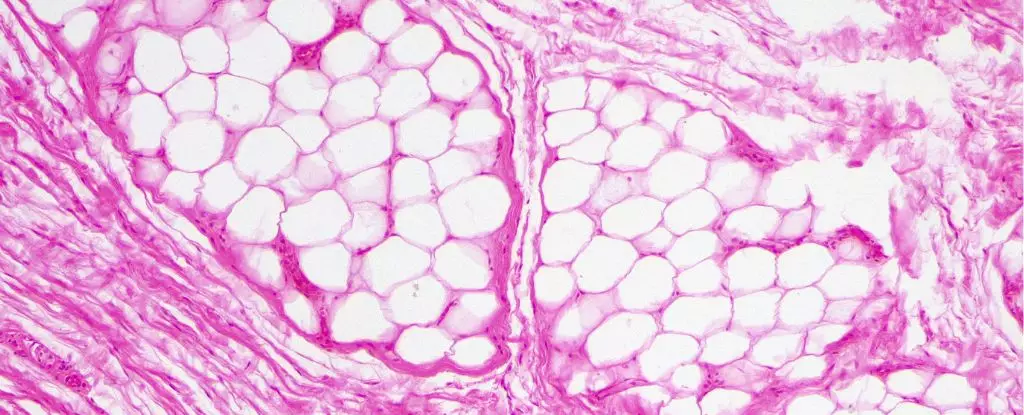Brown fat, also known as brown adipose tissue, has long been recognized for its ability to burn calories in order to generate heat and maintain the body’s core temperature. In contrast to white fat, which predominantly functions as a storage depot for energy, brown fat is densely packed with mitochondria, the energy centers of cells. Recent studies have revealed that brown fat is not limited to small mammals and human newborns, but is actually present and functional in most healthy adults. This discovery has sparked considerable interest in the potential of brown fat to combat obesity and metabolic diseases associated with weight gain.
A groundbreaking study conducted by an international team of researchers from Germany, Denmark, Sweden, and Spain has shed light on the regulatory mechanism of brown fat metabolism. Through experiments on mice, the researchers identified a protein known as AC3-AT that acts as the ‘off switch’ for brown fat metabolism. When this protein is removed, brown fat cells continue to burn blood sugar and fat at an accelerated rate, mimicking the response to cold temperatures. This discovery has significant implications for the development of new treatments for obesity and metabolic syndromes.
In experiments involving mice fed a high-fat diet, those lacking the AC3-AT protein exhibited lower levels of fat accumulation and improved metabolic health compared to the control group. The absence of this protein allowed the mice to more effectively burn calories and increase their metabolic rates by activating brown fat. These findings suggest that targeting the AC3-AT protein could be a viable strategy for promoting weight loss and improving metabolic function in individuals struggling with obesity.
Interestingly, the researchers also observed the expression of the AC3-AT protein in human cells, indicating that the regulatory mechanism of brown fat metabolism is conserved across species. Furthermore, the induction of this protein by cold temperatures suggests that environmental factors may play a role in activating brown fat in humans. The potential for targeting the AC3-AT protein as a means of activating brown fat in the treatment of obesity and related health issues holds promise for future therapeutic interventions.
While the presence of brown fat in small mammals has been known for some time, its role in the human body remains a topic of ongoing investigation. The recent research on the off switch for brown fat metabolism represents a significant step towards understanding the complex regulatory pathways that govern the activity of brown fat. As scientists continue to unravel the mysteries of brown fat, there is hope that new approaches to combating obesity and metabolic disorders will emerge, offering potential solutions to a growing global health crisis.
The identification of the AC3-AT protein as a key regulator of brown fat metabolism represents a major breakthrough in the field of obesity research. By targeting this protein, researchers may be able to unlock the full potential of brown fat as a therapeutic target for weight loss and metabolic health. The future holds promise for the development of novel interventions that harness the power of brown fat to combat the rising tide of obesity and its associated complications.


Leave a Reply